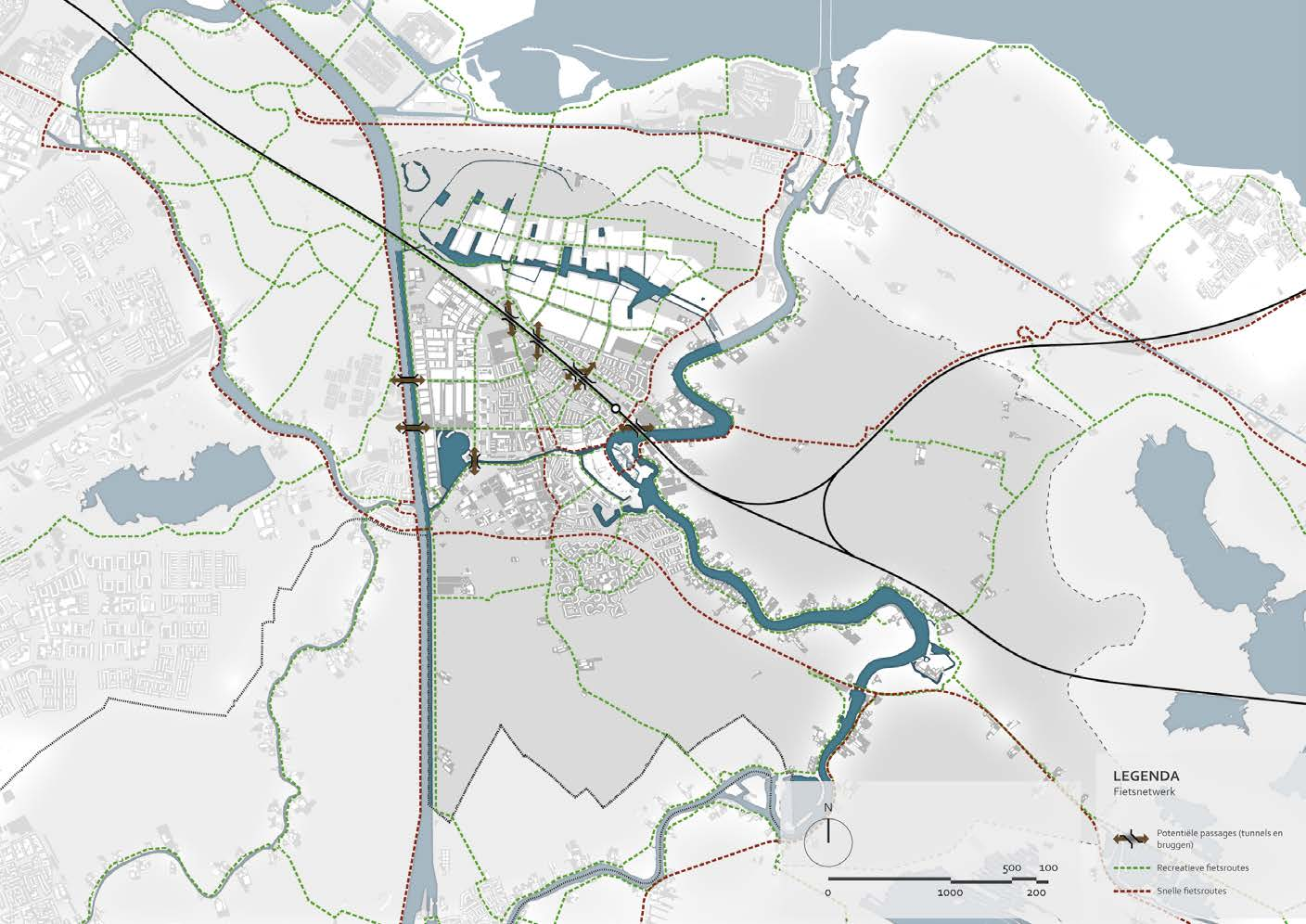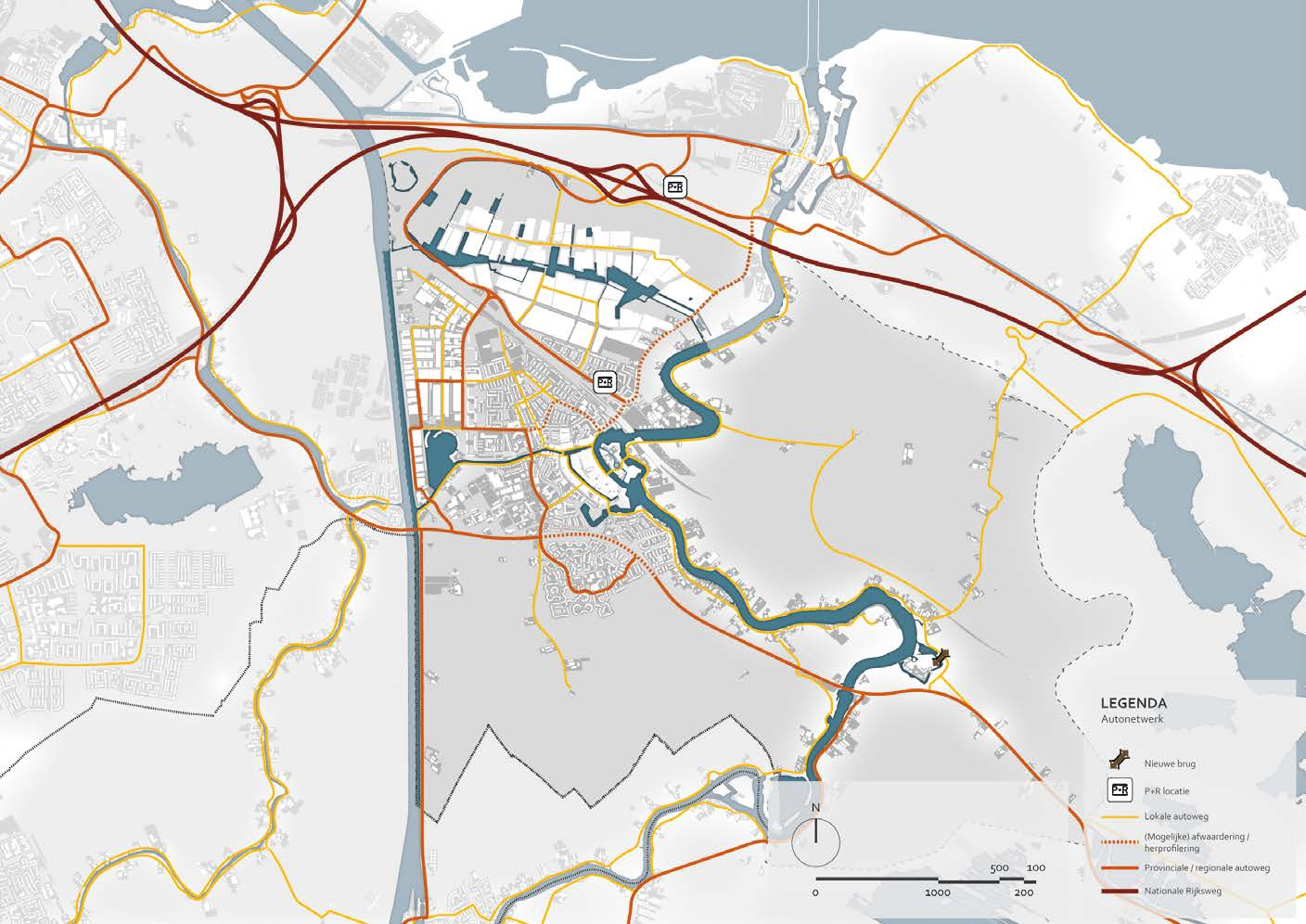English translation of excerpts from "Omgevingsvisie Weesp 2050" (Weesp Environmental Vision 2050)
Translation created: April 20, 2025
Weespersluis is the newest and largest urban expansion of Weesp. This document provides official translated excerpts from the "Omgevingsvisie Weesp 2050" (Weesp Environmental Vision 2050) planning document, focusing on all mentions and descriptions of the Weespersluis development.
Note: Page numbers refer to the original Dutch document. All text is directly translated from the original document.
"Weesp is Weesp, and Weesp remains Weesp. But Weesp is not standing still. The main message of this Environmental Vision is that Weesp will address various challenges and issues, but stays true to its own identity. So that Weesp residents can continue to feel like Weesp residents, and newcomers feel welcome. Everything that makes Weesp special - the unique location on the Vecht, the green landscape immediately surrounding Weesp, and its rich cultural heritage - will be protected, strengthened, and made more accessible. Weesp has the ambition to remain a permanent part of the green corridor around Amsterdam and Naardermeer. That fits with Weesp's position between the Diemerscheg and the Naardermeer. The manageable scale of Weesp is also an important quality that must be preserved. A manageable scale that is expressed in its small-scale character, the reasonably uniform building height, and the spacious layout. Preserving these qualities while addressing the challenges: that is the mission for this Environmental Vision. Weesp is growing rapidly around the year 2020, with the construction of Weespersluis. Such an expansion of the city will not take place again in the coming decades. There is still room to be found for expansion within the existing boundaries of the built-up area, and we want to protect the small-scale character of Weesp. Because further building on the landscape is out of consideration while there are various 'space-demanders', choices will have to be made. Space can only be used once. Four space-demanders are elaborated below. These can sometimes be combined, but the integration will certainly also require choices and priorities. In this Environmental Vision, these choices are made, or it indicates which criteria will be applied to future choices."
Source: Page 22
"The Bloemendalerpolder is being developed into a new woonlandschap [residential landscape]. In this area of approximately 450 hectares, a new water system is being created with a navigable connection via a lock to the Vecht, new nature is being developed, new forests, new parks, a new recreational network, and approximately 2,950 homes are being built."
Source: Page 70, paragraph 5
"In the Bloemendalerpolder, the nature compensation area 't Breedland is being created. Recreational routes for the residents of Weespersluis and the rest of Weesp run through here, such as the rondje Gouw [Gouw circuit], waterways, and walking paths. This new nature is roughly located between the A1 and the Weespersluis district. It consists of flower-rich grassland, ponds (shallow water), thickets, reed, swamp forest, and dry forest. Cultural-historical elements from different periods are given a prominent place in the plan: a duck decoy, an old route from Weesp to the Zuiderzee (Papelaan), and bunkers and other stone objects from the German radar station 'Seeadler' from the Second World War. Green and blue [water] will make up 2/3 of the surface of the Bloemendalerpolder."
Source: Page 70-71
"Along the Vecht, new country estates are being created – the parks – with recreational and ecological significance. They create a spatial connection between the central part of the Bloemendalerpolder and the Vecht."
Source: Page 71, paragraph 1
"The growth, currently mainly caused by the realization of the Weespersluis district, creates challenges in itself. How can Weesp ensure that it becomes/remains an undivided city? The popularity of Weesp also translates into rising house prices and a large influx from Amsterdam, but also from outside the region and the Netherlands."
Source: Page 20, paragraph 2
"The Weesper population will increase in the coming years (2020-2040) and will age in the process (see table 3 and graphs 2 and 3). While there is growth in all age categories, the number of elderly is rising relatively the fastest. This has consequences for the housing market, but also for the type of facilities that need to be created."
Source: Page 40, paragraph 2
"The wijk [district] Weespersluis contains almost exclusively koopwoningen [owner-occupied homes], mainly in the higher segment, often ground-based and few apartments. For Weespers looking for a home within the municipal boundaries, there is little to choose from – there is a certain mismatch between the current and future housing supply and the housing needs of the Weesper."
Source: Page 47, paragraph 1
"The new Weespers in Weespersluis work largely outside of Weesp and choose Weesp partly as a place to live because of the good connection with Amsterdam. Whether that will also be the case in the longer term is the question; the next generation of residents of Weespersluis will (also) look for a job in Weesp."
Source: Page 79, paragraph 1
"The new Weespers do not yet feel truly connected to the 'old' part of Weesp due to the location and infrastructure of their district. The (yet to be constructed) cycling and walking connections between both parts must be attractive: safe, preferably green with see-through shrubs. Good lighting is necessary for the evening and night."
Source: Page 91, paragraph 3
"We will investigate how Weespersluis can be better connected with the rest of the city. The aim is to have more than one connection in the future, and all connections must contain safe, accessible, and green-surrounded walking and cycling paths."
Source: Page 63, paragraph 5
"The railway forms a barrier between the north and south sides of Weesp, with only two rail passages on the west (Hogeweyselaan) and east sides (Stationsweg). With the development of Weespersluis, the importance of better flow between north and south increases further, as the daily traffic flow between Weespersluis and the city center is expected to increase further. Improvement of existing passages, supplemented with one or more new underground passages of the railway, is inevitable to keep Weesp internally well connected in the future."
Source: Page 91, paragraph 1
"The new access road that curves around Weespersluis and directly connects the A1 with Hogeweyselaan provides a new (fast) route to handle heavy logistical traffic. With the new route, the Leeuwenveldseweg is relieved. This will mainly only have to handle destination traffic to the station, the adjacent residential areas, and traffic to the Nijverheidslaan business park."
Source: Page 94, paragraph 1
"Cyclists from Weespersluis have a choice of two rail passages that are far apart and moreover not sufficiently bicycle-friendly. Many new Weespers in Weespersluis will want to make daily use of the city center, and this is insufficiently facilitated in this way."
Source: Page 93, paragraph 2
"With the development of Weespersluis, Weesp gains a lot of qualitative green space, through the addition of the Weespersluispark, the Gouwpark, and the Muiderslotpark."
Source: Page 71, paragraph 2
"The childcare in Weespersluis now offers little choice to parents. A solution is to provide space for more providers, and to stimulate childcare in the existing city."
Source: Page 53, last bullet point
"In Weespersluis, two primary schools are being built and the associated gymnasiums are being combined into a new sports hall to be developed, Weespersluis sports hall."
Source: Page 57, paragraph 1
"In the Bloemendalerpolder, a city beach is being developed."
Source: Page 97, paragraph 2
"The new ring road around Weespersluis also offers opportunities to introduce a whole new bus route, from the N236 over the Rijnkade and/or via the Amstellandlaan – Hogeweyselaan over the new ring road towards the A1 and P+R Muiderpoort. From the Weesperweg, another potential bus route can serve the northeast side of Weespersluis."
Source: Page 139, paragraph 3
There are several potential passages (tunnels and bridges) proposed to better connect different parts of Weesp, including Weespersluis:
Source: Page 132, bullet points

"Weesp is part of an extensive regional cycling network. Weesp is well accessible by bicycle from the various directions such as Amsterdam, Hilversum, Bussum, Muiden and Almere. In addition to functional use, many of these routes are also suitable for recreational use due to the landscape qualities. Especially along the rivers, such as on both sides of the Vecht, beautiful cycling routes can be found that are part of the cycling junctions of the ANWB."
Source: Page 92, paragraph 1

"The road network around Weesp is divided into three layers: highways, regional roads and local roads. Not much will change in the road network in the coming years. The biggest changes are the arrival of the new access road 'the Waterlinie' between the A1 and the Hogeweyselaan (Diemerboog) and the downgrading/redesigning of the Korte Muiderweg/Weesperweg and possibly part of the current inner ring (Herensingel - Jan Tooropstraat - M. Nijhoffstraat) and again part of the Herensingel, as a result of the new route that arises from the arrival of the Diemerboog."
Source: Page 143, paragraph 1
"The entire northern strip between Weespersluis and the A1 and part between Weespersluis and the new access road. In this area, a completely new forest is being created through the planting of many new trees."
Source: Page 71, paragraph 3
"Also in Weespersluis were archeological remains of an old gallows field discovered. This location (in the new Weespersluis district) is kept free from development."
Source: Page 134, paragraph 4
For more information about the Weesp Environmental Vision 2050 or the Weespersluis development, please contact:
Municipality of Amsterdam
Space and Sustainability Department
P.O. Box 2758
1000 CT Amsterdam
omgevingsvisie@weesp.nl
www.weesp.nl/weesp2050
Translation created April 20, 2025 based on the original Dutch document "Omgevingsvisie Weesp 2050."